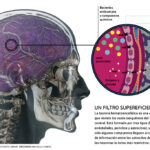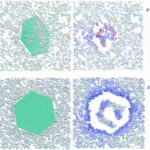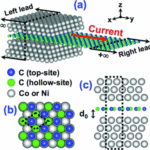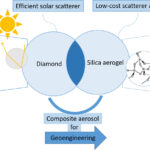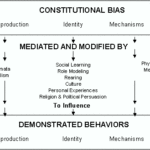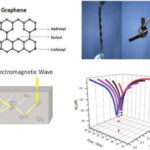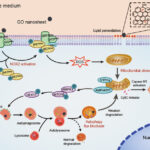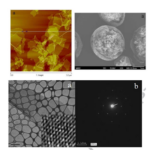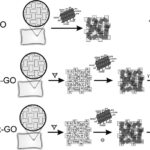October 6, 2024 Scientific alternative studies
Indeed, it was inevitable that the theory of relativity and the implications of the discovery of nuclear energy would be exploited by the forces preparing for World War II.
Mileva Maric and the mysteries of the hidden archive
The story of Mileva Maric, the Serbian scientist and first wife of Albert Einstein, remains shrouded in mystery, so much so that it has not yet been possible to understand how much Mileva influenced Einstein’s scientific work and the theory of relativity itself.
Documents proving her existence and contribution to the scientific community have been guarded and saved from oblivion by many scholars and intellectuals, while the indifference of politicians has caused their slow attrition.
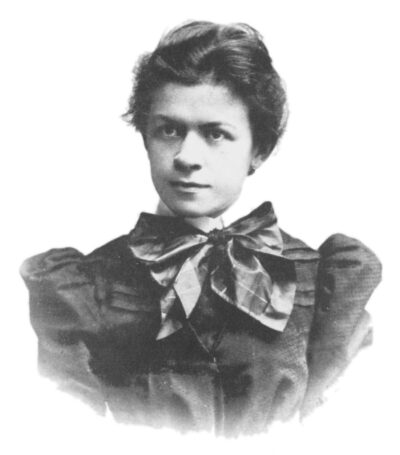
While the United States may have the “credit” for creating important mega-corporate brands such as McDonald’s or Coca Cola, which are as famous to the world as very great intellectual discoveries, Serbia praises the memory of very great minds such as Nikola Tesla or Mileva Maric, who are remembered only by museum exhibits with few visitors.
In particular, the story of Mileva Maric, Serbian scientist and wife of Albert Einstein, remains shrouded in mystery, so much so that it has not been possible to understand how much Mileva influenced Einstein’s scientific work and the theory of relativity itself.
After his divorce from Mileva Maric, it seems that Einstein wanted to hide all evidence of his past with her, so that only a few records of their life together have survived.
Perhaps it was precisely to keep the myth of Einstein’s genius from collapsing, to reveal that his wife’s hard work was behind his discoveries, that Mileva Maric’s existence and contributions were forgotten.
The era in which Mileva and Einstein lived did not leave room for women in academic and intellectual circles.
For this reason, Mileva Maric could not study at the University of Belgrade, and so she turned to the ETH Zurich to study medicine ; after a short time, she decided to enroll in the Faculty of Physics and Mathematics, becoming one of the four women in the world who were engaged in such studies.
Her meeting with Einstein and their love led to the birth of their first daughter, Liza, and her subsequent marriage in 1902 with two other children, Eduard and Hans Albert: these events led to profound changes in her personal and professional life, creating the concrete prospect of a scientist of excellence as envisioned by her professors.
However, her life was completely dedicated to her family and to the work of Einstein, who decided to separate in 1919.
After this traumatic decision, Mileva Maric stepped out of the limelight and people soon forgot her, and so those who remembered her only as “Einstein’s wife” and not as a scientist soon, after the divorce, no longer even remembered her name.
For many years her burial place was unknown, until on June 23, 2004 her grave was found in the Nordhaim cemetery in Zurich, thanks to the efforts of the painter Petar Stojanovic, founder of the Nikola Tesla Memorial Center in Sent Galen.
This is yet another testimony that only people, without the support of states – which put their own political interests above intellectual heritage – have helped to preserve the memory of a woman of great intellectual importance.
The Austrian-born Serbian painter Petar Stojanovic has been interested in the life and work of Mileva Maric-Einstein for a long time, and even decided to move to Zurich in order to conduct research on the spot.
“My move from Austria to Switzerland helped me to find numerous documents related to Mileva Maric’s life.
I met Dr. Ana Pia Mansen, director of the Zurich Archives, who helped me in my research to find out if Mileva was buried in Zurich on August 4, 1948″.
Like Petar Stojanovic, the writer Dorde Krstic, author of the book “Mileva and Albert Einstein : Love and Joint Scientific Work“, who has been living in Slovenia for years, is also driven by enthusiasm to save this important piece of scientific history, even though it should be a state task.
“I know that the Maric family house in Novi Sad is in a very bad condition, because it was built in 1907 and has never been restored until now.
I am in contact with the director of the City Museum, Milan Paroski, to whom I provide all the Mileva documentation in my possession. I believe that everyone has done wrong to Mileva, who today deserves at least some recognition from her city, Novi Sad“.
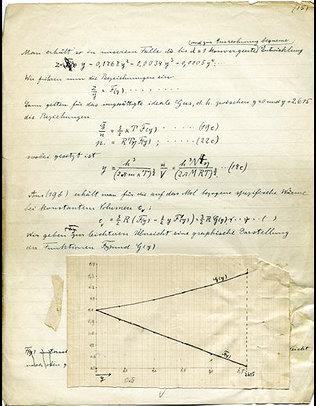
In fact, the 60th anniversary of his death is approaching, but the house where he lived with his parents, at 20 Kisacka Street in Novi Sad, has not yet been reconstructed as a historical monument.
For many years, under the guise of “unclear legal and ownership relations” of the lengthy bureaucracy, Mileva’s parents’ house has been further worn down by time, ignorance and neglect of politicians.
The legal successor to the house is Einstein’s grandson, Bernard Cesar Einstein, who donated it to the city of Novi Sad and authorized family friend Dorde Krstic to turn Mileva’s parents’ house into the “Museum” of Mileva Maric and Albert Einstein.
“Novi Sad will thus have an exclusive museum where it will be possible to discover the life of Mileva Maric“, Krstic said in an interview, adding that about fifty documents and pieces of evidence will be displayed, testifying to the life of the Maric-Einstein couple.
Krstic has been researching and collecting testimonies and documents about Mileva’s life for more than 50 years ; he was helped in this great work by his son Hans, who lived in America as a university professor until 2001, the year of his death.
However, the documents from Mileva’s Zurich apartment mysteriously disappeared, and all the biographies lacked data that had been kept secret for years in Einstein’s archive in Jerusalem.
It was only in 1987, after an outcry from the scientific community, that they were released, though not in their entirety.
Radmila Milentijevic, a professor of European history at New York University, was among the lucky few who were able to consult the archive, which had been closed to the public by the State of Israel for more than 30 years.
“Einstein was a Jewish-German, a physicist and a distinguished scientist, made famous by the Nobel Prize, which in Israel is considered a cult or an icon”.
The Serbian professor explains that she managed to study the documents for 20 days and found a lot of information that she will report in her book, which will be published soon, first in English and then in Mileva’s native language, Serbian.
Professor Milentijevic also believes that Einstein’s work was also “embroidered” thanks to his wife’s hard work, and that her contribution to the theory of relativity and other Einstein discoveries was enormous, but forgotten for years.
In particular, Radmila Milentijevic claims that the ambitious physicist took over Mileva’s work and then used the money he received from the Nobel Prize to help her and their children, who continued to live in the Zurich apartment.
While everything that belongs to Einstein is preserved as an “icon” – such as one of his letters, which was auctioned off for 8,000 pounds – everything that belonged to Mileva and can be traced back to her would have been lost or forgotten without the work of a few people who helped to preserve and pass it on.
The city of Novi Sad itself has realized the value of Mileva Maric’s work only in the last few years and has decided to open a museum dedicated to her and a prize at the University of Novi Sad, while the reconstruction of the house of Maric’s family members and the opening of the museum can begin as soon as the problems related to the ownership of the house are solved.
However, it is strange to observe that Serbs often forget that their culture is a world intellectual heritage, do not appreciate science, limit the educational system and humiliate those who work in it, education itself becomes a “humanoid factory”.
No one should be surprised if in the future, along with Tesla, Maric, Pupin and other often forgotten names, the Serbian people itself and its entire culture will be forgotten.
The Theory of Relativity and Mileva Maric
According to many scientists, the vastness of the theory and mathematical model underlying the theory of relativity suggests that there is much more complex and collaborative work behind it.
Even today, with the help of supercomputers, it is hard to imagine that a single scientist could produce so much perfectly formed work on very different subjects in a single year.
Skeptics have always wondered how Einstein could have done this work without computers, while still working full time.
In fact, relativity and nuclear energy would not have been discovered without the intuitive foundation of Mileva Maric, who brought the entire theoretical framework to systematic and logical perfection.
Recent documents have brought to light a direct testimony in which Mileva Maric reveals to a Serbian friend:
“We have finished an important work that will make my husband the most famous scientist in the world“.
Also, in many of Einstein’s private letters, expressions such as “our” and “we” are often used in connection with scientific subjects he was working on, so there is no doubt that the couple was working together on some theory.
Authoritative testimony on this dispute comes from the Soviet physicist Abraham Joffe, a distinguished member of the Soviet Academy who had access to the original 1905 manuscripts.
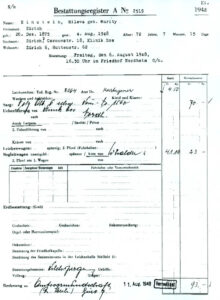
Joffe then testified that he saw documents from the development of the theory of relativity signed with the name Einstein-Marity (Maric, translated from Swiss law as Marity).
The issue has long been debated, as the traditional story denies the existence of this signature, attributing full authorship to Einstein, but the discovery of some documents would show that the scientist and his first Serbian wife were co-authors.
Among other things, the name Einstein-Marity appeared only on official documents consulted by the academies, because it was not customary to write the two surnames side by side, except for the wife, who used to write her maiden name next to her husband’s.
Incidentally, Mileva Maric’s own death certificate explicitly mentions “Einstein-Marity”.
Based on this observation, some have even speculated that part of the theory was presented by Maric alone.
This strange “co-participation” is also confirmed by the fact that Albert Einstein did not receive the Nobel Prize for the theory of relativity, but rather “for his contributions to theoretical physics, in particular for the discovery of the law of the photoelectric effect“.
As you can see, relativity is not explicitly mentioned in the citation, but is only implied, given that the later theories were logical deductions from the first.
The darker aspects of their relationship do not end there, considering that in the aftermath of their divorce, to allow her later second marriage to Elsa, Einstein immediately agreed to the payment of alimony and large sums of money.
Sums that, according to the same sources, were supposedly fees for theories they had discovered together.
There is also a strange contradiction in the words of Einstein, who often denigrated his wife in his correspondence and always addressed her with indifference.
Soon, in fact, the scientist’s success was followed by deep divisions, also due to a failure to share the “military” purposes for which Einstein’s discoveries were intended.
Indeed, despite his pacifist campaign, it was inevitable that the theory of relativity and the implications of the discovery of nuclear energy would be exploited by the forces preparing for World War II.

